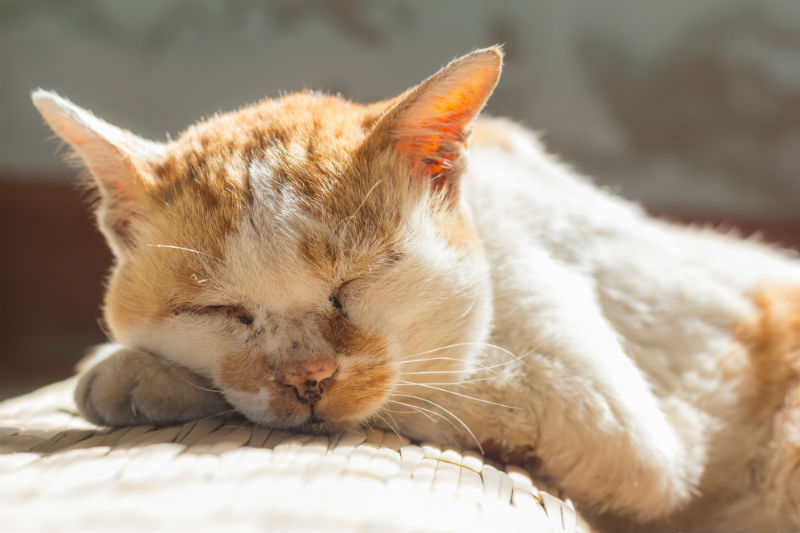What is Feline Leukaemia Virus?
- Feline Leukaemia Virus (FeLV) is a retrovirus found in cats around the world.
- Individuals most at risk are outdoor cats or those that live in multi-cat households.
- Kittens are more susceptible to infection than older cats.
- Diseases caused by FeLV include cancer, blood disorders, and immune deficiency.
- There is no curative treatment for FeLV, so prevention is key.
- There is no evidence that this virus can be transmitted to humans or other animals.
Virus Basics
- FeLV is a retrovirus. This means the virus gets inside a host cell and creates double-stranded DNA from its single-stranded RNA in a process called ‘reverse transcription.’
- There are two stages of FeLV: In the early stage (primary viremia), the body may be able to mount an immune response and effectively get rid of the virus.
- Secondary viremia occurs when the virus has colonized the bone marrow, and the body is no longer able to mount an effective immune response. Cats with secondary viremia will be infected for the rest of their lives.
How It Is Spread
- FeLV is transmitted in saliva, tears, urine, blood, and feces.
- Common methods of spread include cats grooming each other, shared food/water dishes, shared litter boxes, bite wounds from infected cats, and infected mothers passing the virus on to their kittens (vertical transmission).
Signs
- Infected cats may show no signs for weeks to months; then over time, they will begin to show the signs described below. Sometimes, this may be interspersed with periods of good health.
- Main diseases following from FeLV are anemia, cancer, and immune suppression.
- Loss of appetite/weight loss.
- Poor hair coat condition.
- Enlarged lymph nodes.
- Persistent fever.
- Inflamed gums (gingivitis) and mouth (stomatitis).
- Gastrointestinal disorders (diarrhea, often bloody).
- Neurologic disorders (seizure, eye conditions, behaviour changes).
Diagnosis
- An ELISA (enzyme-linked immunosorbent assay) will test for both primary and secondary stages of viremia. Cats may be able to clear primary infections on their own and test negative on subsequent tests.
- IFA (indirect immunofluorescent antibody assay) detects only secondary viremia. Cats which test positive for this have a poor prognosis.
- Both tests require a small blood sample from your pet.
Treatment
- There are currently no antiviral treatments proven to be effective, but many infected cats survive for years with a good quality of life with proper preventative care.
- Treatment includes frequent veterinary exams to monitor health and steps to decrease the risk of secondary infection such as maintaining dental health, good parasitic control, decreasing stress and keeping your cat indoors.
Prevention
Prevention is key for control of FeLV. Good vaccines exist which provide protection against infection or decrease the likelihood of persistent viremia. Recommended protocol is as follows:
- All kittens should receive two boosters along with their other core vaccines at 8 and 12 weeks of age, followed by a booster one year later.
- Subsequent boosters should be based on your cat’s risk of exposure. If your cat goes outside or comes in contact with other cats of unknown health status, yearly re-vaccination is recommended.
- Test for FeLV in newly adopted cats and vaccinate uninfected individuals.
- FeLV vaccine is NOT effective in already infected individuals.
- Keep vaccinated cats separate from infected cats because vaccines are not 100% protective.
Further Information:
Merck Manual – Pet Health Overview
Cornell Feline Health Center
Cat-Friendly Homes
Written by Dr. Connie Tuck, DVM




